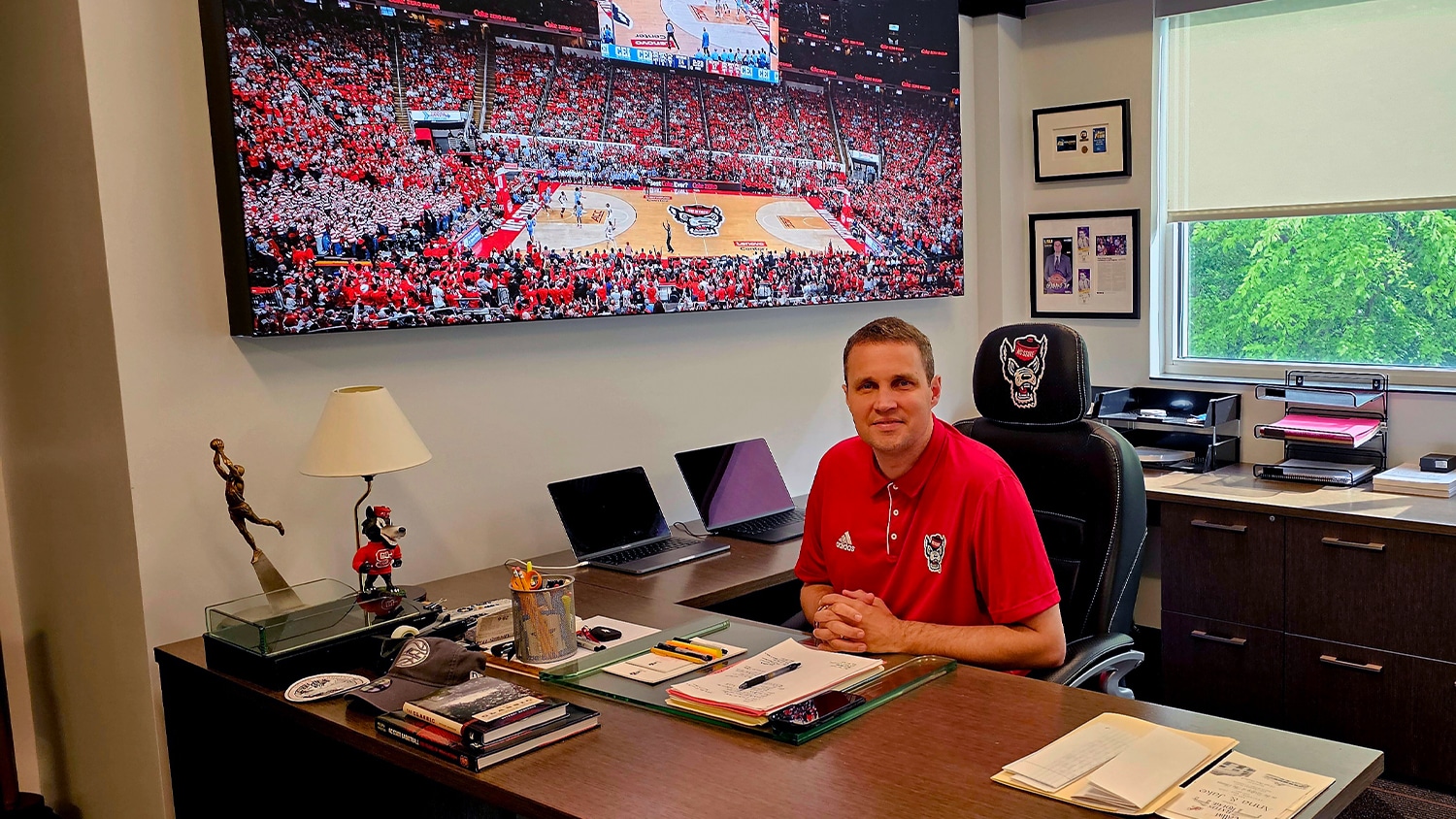Vet Rescues Animals
Animal control officers in Wilson County saw signs of problems in a dog breeder’s backyard: dozens of thin animals with matted fur.
On their next visit, they brought a sworn animal cruelty investigator: Dr. Kelli Ferris, an NC State veterinarian who’s worked on 15 major puppy mill and animal hoarding cases in North Carolina, some involving hundreds of animals. On this property, Ferris counted a total of 235 dogs of a wide range of breeds, from boxers and German shepherds to Chihuahuas and Scottish terriers. In examining the animals, she saw signs of fire ant bites, flea and tick infestations, intestinal parasites and dental decay so severe it had eroded the jawbones of some dogs. Mother dogs were in poor body condition, and all of the puppies were underweight for their ages.
Based on the findings that day, the owner agreed to transfer the dogs to approved rescue groups during the following week. Meanwhile, Ferris helped pull together a rescue team that included veterinarians, trained volunteers and several dozen veterinary students who had just started their fall semester classes at NC State. They organized an emergency shelter at the county fairgrounds, the only space large enough to house so many animals.
However, when it was time to begin removing the animals, officers found that the breeder had moved all of them to other locations. After legal prodding, 180 of the animals were returned for evaluation and treatment.
By the time veterinary students Melissa Fleischman and Selena Lusk arrived at the fairgrounds on a Saturday morning, about 60 animals were on site, with some on the way to local veterinary hospitals for additional care. They checked each dog’s temperature, pulse and respiration rates, then assisted with physical examinations, working with veterinarians. Finally, they held animals as photos were taken to use as evidence in court. The breeder was later charged with 13 felony counts of animal cruelty, and the case is pending. “I appreciated the fact that Dr. Ferris was so willing to get students involved so that it could be an educational experience for us,” says Fleishman, who is president of the Veterinary Student Public Health Corps.
It wasn’t the first time that Fleischman had seen a large-scale animal cruelty investigation; she worked as an animal shelter technician in Orange County for a time. And she’s likely to see more during her veterinary career, particularly if she specializes in emergency or shelter medicine.
Animal Hoarding Increasing
“Puppy mill operations have been around for years, but animal hoarding seems to be on the increase in North Carolina,” Ferris says. “My colleagues nationally report that it’s increasing as well.”
Sometimes, investigations involve a breeding operation. That was what Ferris encountered in her first case in 1982 for the American Spaniel Club. When a member died, 80 dogs were found on her property. “All you would see were the beautiful dogs at the show, but here were 60 dogs matted to the skin in a hay barn with no running water.”
Ferris has seen a hoarder whose house was overflowing with black cats as well as a hoarder who had animals ranging from pocket pets to livestock.
“The advent of no-kill sheltering gives someone who is hoarding animals a way to try to gain respectability,” Ferris says. “Instead of being ‘the crazy cat lady,’ someone can position themselves as a shelter with a Web page and nonprofit status.”
However, many hoarders with large numbers of animals live in conditions that are unsafe for humans and animals. In the course of investigations, Ferris has endured ammonia fumes from decaying animal waste piled on the floor. She documents the conditions of both animals and their living spaces, using clinical terms and descriptions that she can use in court.
Ferris recalls a conversation with a man accused of animal hoarding who had recently moved to North Carolina. “He suggested that people were unfriendly to him because he was a Yankee,” Ferris recalls. “I said to him, ‘Maybe it’s not that people don’t like you because you’re a Yankee. Maybe it’s that you’re covered in urine and feces.’”
“He said to me, ‘Your reality is different from my reality but that doesn’t make it wrong.’ I said, ‘Well, it makes it illegal.’”
All but the most severe animal cruelty cases are misdemeanors. Jail time is typically suspended unless there’s another offense. Some counties have stricter penalties than the state, but animal advocates are trying to change that.
Some Animals Difficult to Place
Ferris’ goal is to relieve animal suffering. But once a rescued dog or cat is nursed back to health, the problems aren’t over. Some have never been around people, which makes them difficult to place.
“That’s what stood out to me as we were working with the dogs at the fairgrounds,” says Lusk, one of the student veterinary volunteers. “We had golden retrievers who would lie down and cower when we approached them, and that’s unusual for such a friendly breed.”
Gigi, a French bulldog that Ferris adopted, is a good example of the challenges of adoption. She was among seven purebred dogs abandoned in southern Wake County. Her long toenails had grown into the pads of her feet, and she was unfamiliar with a leash, signs of a caged animal.
Ferris knew that Gigi would require skilled care. She needed medication and a special diet for her allergies, which had caused hair loss, and a $1,200 surgery for respiratory problems. “Most people don’t adopt a dog because they want to take on a project,” Ferris says. “They’re not looking for an animal that’s afraid of its shadow or soils constantly.”
Fortunately, Gigi was a social dog. These days, she enjoys human company. She also likes wild deer who come looking for peaches in the yard, as well as the cat, who doesn’t return Gigi’s affection. In less than a year, her weight has risen from 9.5 pounds to a healthy 19.5.
In addition to her animal cruelty investigation work, part of Ferris’ extension and outreach responsibilities as an assistant clinical professor, she is active in emergency planning and disaster recovery, which require some of the same logistical and networking skills needed to set up a rescue operation. Her involvement in North Carolina began in 1999, when Hurricane Floyd and severe flooding stranded animals across the state.
Does the challenge of helping during disasters and animal cruelty investigations ever become overwhelming for Ferris?
“What keeps me from compassion fatigue is that I’m not involved unless we’re able to take some positive action,” she says. “Usually, I’m really excited to arrive and get started doing something to care for animals and alleviate their suffering.”
- Categories:


